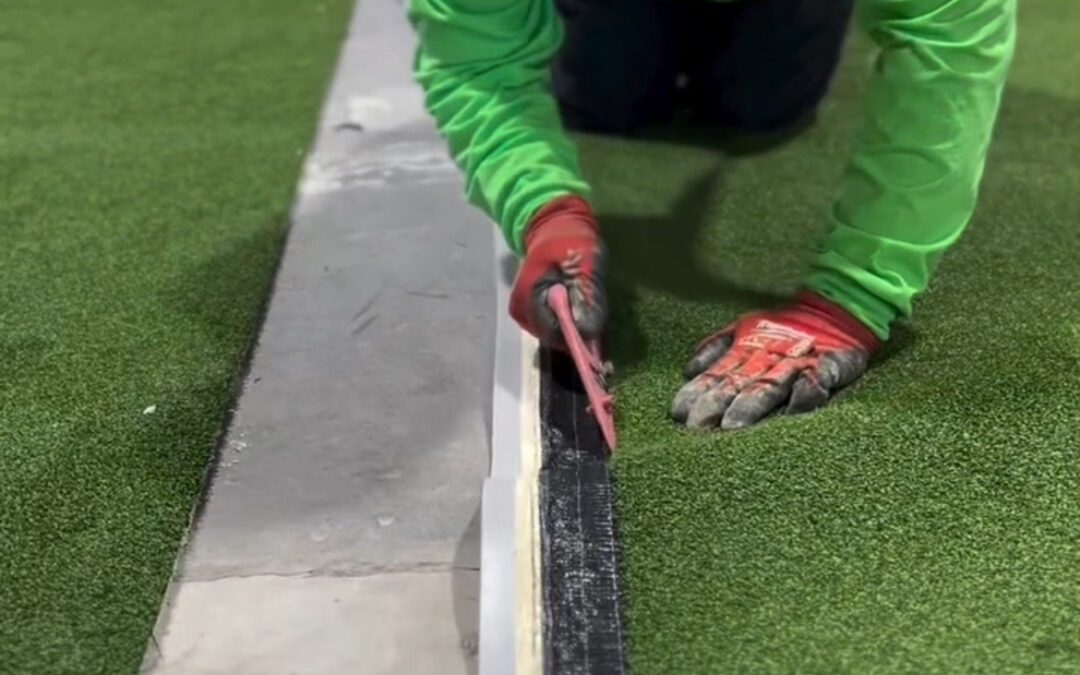When it comes to maintaining sports fields and recreational areas, the challenges of natural grass are well known. From constant wear and tear to seasonal challenges, keeping grass looking and performing its best is no easy task. This is where artificial grass steps in as a game-changer, offering a durable, low-maintenance, and environmentally friendly solution. Below are some key reasons why artificial grass is becoming the go-to choice for sports fields and recreational areas:
1. Durability and Consistency
One of the main advantages of artificial grass for sports fields is its incredible durability. Natural grass can wear down quickly with heavy use, requiring frequent reseeding, watering, and maintenance to stay healthy. Artificial grass, on the other hand, is designed to withstand high traffic without losing its shape or lush green appearance. Whether it’s soccer, football, or recreational playgrounds, the consistent surface of artificial grass ensures optimal performance without the risk of bald patches or uneven playing fields.
2. Low Maintenance
Artificial grass drastically reduces the need for ongoing maintenance, which can be a game-changer for schools, parks, and sports complexes. Unlike natural grass, there’s no need for regular watering, mowing, fertilizing, or pesticide application. With artificial grass, you can say goodbye to high water bills and the hassle of scheduling regular lawn care services. This not only saves time and money but also conserves water, making it an eco-friendly choice in regions where water conservation is a priority.
3. All-Weather Playability
Natural grass fields are highly dependent on weather conditions. Heavy rains can turn fields into muddy messes, while extended dry periods can cause grass to brown and deteriorate. Artificial grass, however, is not affected by rain, drought, or extreme temperatures, making it an ideal surface for year-round play. Whether it’s sunny, raining, or snowing, artificial grass fields remain playable and safe, ensuring that activities and games can go on without disruption.
4. Safety and Cushioning
For recreational areas, safety is a top concern, especially for children’s playgrounds and sports fields. Artificial grass provides a cushioned surface that can help reduce the impact of falls and injuries. Many artificial grass systems are designed with padding underneath to provide additional shock absorption, which is crucial in preventing injuries during high-impact sports or on playgrounds where children are more likely to fall. The consistent, level surface also reduces the likelihood of accidents caused by tripping over uneven ground.
5. Non-Toxic and Safe for All
A common concern about artificial grass is whether it contains harmful chemicals. Modern artificial turf is designed to be non-toxic and safe for both humans and pets. It is made from materials that meet strict safety standards, ensuring that there are no harmful chemicals, heavy metals, or toxic substances present. This makes it a great option for schools, parks, and sports fields where children and pets spend a lot of time playing.
In addition to being free of harmful chemicals, artificial grass eliminates the need for pesticides, herbicides, and fertilizers, all of which can pose health risks to those using the fields. These chemical treatments are often necessary to maintain the health of natural grass, but they can linger on the surface and cause exposure through skin contact or inhalation. With artificial grass, there is no need for these potentially hazardous chemicals, creating a healthier environment for everyone.
6. Eco-Friendly Benefits
While artificial grass is made from synthetic materials, its overall environmental impact can be lower than that of natural grass. For starters, the significant reduction in water usage is a major plus, especially in drought-prone areas. Additionally, artificial grass eliminates the need for gas-powered lawn equipment, which can contribute to air pollution. Furthermore, many manufacturers are now creating artificial grass from recycled materials and designing it to be recyclable at the end of its life cycle.
7. Aesthetic Appeal
Beyond functionality, artificial grass keeps sports fields and recreational areas looking perfectly manicured all year long. There’s no need to worry about dead patches, discoloration, or uneven growth. With artificial grass, every field maintains a vibrant, green appearance regardless of weather conditions or heavy use, creating an inviting space for athletes and recreational users alike.
Artificial grass offers numerous advantages for sports fields and recreational areas, from its durability and low-maintenance nature to its non-toxic materials and all-weather playability. It’s a sustainable, cost-effective, and safe option for any environment where people gather for sports or leisure activities. With these benefits, artificial grass continues to grow in popularity as a top choice for creating resilient and beautiful recreational spaces.

